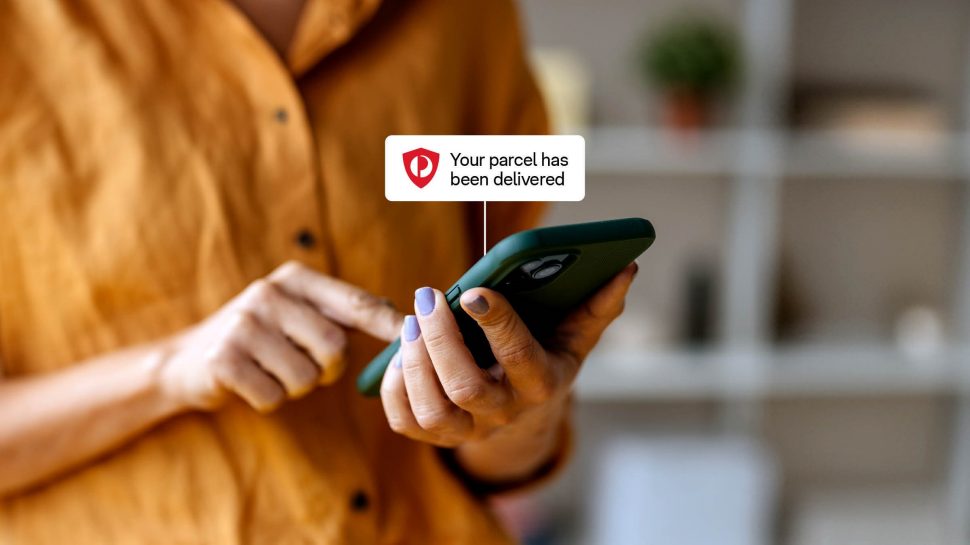Can gamification in eCommerce power customer growth and retention?
Discover how online retailers are boosting customer growth and retention with gamification, turning shopping into an immersive and rewarding experience. Explore real-world examples and learn quick and easy ways to apply eCommerce gamification to your website.

Key points
- Differentiate your brand and enhance customer growth and retention by embracing eCommerce gamification strategies.
- Add fun and interactivity to your site to keep customers hooked and increase conversions.
- Gamified experiences incentivise visitors to spend more time on your site and make purchases.
In the dynamic world of eCommerce, staying ahead of the curve is key to thriving in a competitive market. One trend that’s been gaining momentum and delivering exciting results is retail gamification—and Aussies are onboard, with 68% saying they would enjoy gaming elements while shopping online1. By infusing elements of game design into online shopping experiences, businesses are not only capturing attention but also fostering deeper engagement and loyalty among customers.
But what exactly is eCommerce gamification (or ‘retail gamification’), and how can it fuel customer growth and retention for small to medium online retailers? Let's dive in.
What is eCommerce gamification and why does it matter?
eCommerce gamification is the integration of game-like elements into non-game contexts, such as eCommerce websites or apps, to drive user engagement, motivation and ultimately, sales. By leveraging principles like competition, rewards and progression, businesses can create immersive experiences that keep customers coming back for more.
eCommerce gamification takes on various forms, from loyalty programs and reward points to interactive quizzes and challenges. These elements inject fun and excitement into the shopping journey, transforming mundane transactions into memorable experiences.
Increasing customer growth and engagement: a gamified approach
Let’s look at ways you can integrate retail gamification into your eCommerce site to boost customer growth and engagement:
1. Interactive product discovery
eCommerce gamification introduces elements like quizzes, polls and product configurators to make the browsing experience more interactive and enjoyable. Instead of passively scrolling through endless product listings, customers actively participate in the exploration process. For example, a clothing retailer could implement a style quiz to help customers discover outfits that match their personality, or a beauty brand could offer a virtual makeup try-on tool for experimenting with different looks.
2. Personalised recommendations
By collecting data on customer preferences and behaviour, gamified systems can deliver tailored product recommendations that resonate with individual tastes. Whether through a ‘Match Your Style’ quiz or a ‘Your Perfect Pair’ game, customers receive personalised suggestions that enhance their shopping journey. This personalised approach not only increases engagement but also boosts conversion rates by guiding customers towards products they're more likely to purchase.
3. Immersive shopping experiences
Retail gamification transforms the mundane act of online shopping into an immersive adventure filled with excitement and discovery. New eCommerce tech like augmented reality (AR) try-on experiences or virtual fitting rooms allow customers to visualise products in their own environment, bridging the gap between online and offline shopping. By providing these interactive experiences, businesses create memorable moments that keep customers coming back for more.
Building lasting brand loyalty through eCommerce gamification
Keep your customers coming back for more by creating a memorable online experience using elements of retail gamification:
1. Reward customer loyalty
Did you know, 78% of Australians agree loyalty programs enhance their shopping experience?2 Gamifying a loyalty program is an effective way for businesses to reward customers for their ongoing engagement and purchases. By offering incentives such as points, badges or exclusive discounts, brands can incentivise repeat visits and foster a sense of loyalty among their customer base.
2. Create emotional connections
Through eCommerce gamification, brands can create emotional connections with their audience by tapping into their values, aspirations and interests. By aligning gamified activities with brand values and mission, businesses can cultivate a sense of belonging and purpose among customers. For instance, a sustainable fashion brand could launch a ‘Green Challenge’ where customers earn rewards for eco-friendly actions like recycling old clothes or participating in beach clean-ups, strengthening the bond between customers and the brand.
3. Foster community engagement
Gamification in retail encourages social interaction and community engagement by introducing features like leaderboards, challenges and user-generated content contests. By fostering a sense of camaraderie and competition among customers, brands can build a vibrant community around their products or services. For example, a fitness apparel brand could host a monthly fitness challenge where customers compete to achieve their personal best, share their progress on social media and support each other along the way.
Best gamification examples from Australian brands
Here are three examples of Australian brands (including Australia Post) that have utilised gamification to drive different results:
1. Subway using gamification to boost brand awareness
Last year, Subway introduced a gamified brand awareness campaign in Australia and New Zealand, centering around an app called Sink a Sub. This app, reminiscent of the classic game Battleships, replaced ships with subway sandwiches on a virtual sea battleground. Customers received a code to access the game with each purchase of a sub and a drink. Every participant won a prize, regardless of their performance in the game, with rewards ranging from free drink upgrades to $10,000 in cash.
2. Australia Post’s ‘Great Aussie Coin Hunt’ driving customers in store
Closer to home, our ‘Great Aussie Coin Hunt’ campaign proved highly effective for three consecutive years by leveraging gamified elements to engage customers nationwide. By inviting participants to collect a series of specially minted coins featuring iconic Australian symbols, the campaign created a sense of excitement and adventure.
This interactive approach not only boosted customer interaction and foot traffic in Australia Post outlets but also drove a deeper connection with the brand. The campaign successfully combined the thrill of a treasure hunt with educational value, making it a standout in market.
3. Luxo Living aligning gamification with seasonal events
Aussie furniture retailer, Luxo Living, celebrated Mother's Day 2024 with a gamified flower-picking game on their website. Participants had 30 minutes to find up to four flowers, unlocking discounts up to 20% (avoiding poisonous flowers added a thrilling challenge!).
Every entry qualified for a prize draw, with three winners receiving Luxo Living vouchers. Registration was simple, and players claimed larger discounts by finding more flowers. This engaging promotion combined fun, savings and a chance to pamper special mothers—a smart way to capitalise on a seasonal event known for big spending.
Tips for implementing eCommerce gamification in your retail strategy
While eCommerce gamification can offer significant benefits for businesses, small retailers may encounter challenges when first implementing these strategies. Understanding and addressing these hurdles is crucial for success. Here are a few tips to get you started:
1. Know your audience
Understand your target demographic and tailor gamified elements to their preferences and behaviours. Whether it's a trivia quiz for fashion enthusiasts or a scavenger hunt for tech aficionados, customisation is key to driving engagement.
2. Start small and scale up
You don't need to overhaul your entire website overnight. Begin by implementing simple gamified features, such as a loyalty program or a weekly challenge, and gradually expand based on user feedback and performance metrics.
3. Offer meaningful rewards
Ensure that the rewards offered through eCommerce gamification are compelling and relevant to your audience. Whether it's exclusive discounts, early access to products or VIP perks, incentivise participation with valuable benefits that resonate with customers.
4. Foster community and competition
Encourage social interaction and friendly competition among customers by incorporating features like leaderboards, user-generated content contests and referral programs. Harnessing the power of community enhances engagement and fosters a sense of belonging.
5. Measure and iterate
Track key metrics such as engagement rates, conversion rates and customer satisfaction to assess the impact of your eCommerce gamification efforts and make data-driven refinements over time.
Level up your retail strategy with eCommerce gamification
At Australia Post, we understand the importance of delivering exceptional experiences to your customers throughout their eCommerce journey. With our range of shipping and logistics solutions, including parcel delivery, app tracking services and returns management, we empower you to focus on what matters most—building meaningful connections with your audience.
By integrating eCommerce gamification into your retail strategy, you can create memorable experiences that drive customer growth and retention, while Australia Post ensures seamless delivery and fulfillment every step of the way.
Deliver exceptional eCommerce experiences with Australia Post
Deliver exceptional eCommerce experiences with Australia Post
Become a MyPost Business customer to ensure seamless delivery experiences that complement your gamified shopping journey.



